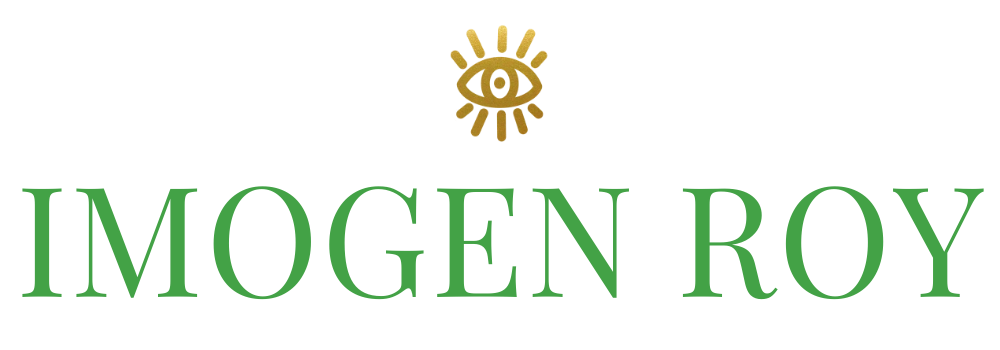Practical Magic | 7 Sacred Types of Rest
Did you know there are 7 essential categories of rest, other than sleeping? Let's explore them all, plus I share tools to practice each one.
7 Sacred Types of Rest
I'm recording this episode in the deepest, darkest depths of winter, and it is all about rest. I want to shout out to Dr. Saundra Dalton-Smith, the author of Sacred Rest, for helpfully providing this framework of the seven different kinds of rest. I organically explored all seven of these areas in 2020 and 2021, but her framework makes it really clear.
In this episode, I share the seven essential types of rest along with my own tools for how you can practice each type.
As Dr. Saundra Dalton-Smith wisely notices, sleep and rest are not exactly the same thing. As part of my Align + Flow curriculum, I learned that biologically as human beings, we need to spend 42% of our time in rest. That's about ten hours a day. This is a biological fact. We can't hack our way past this. We can't change our physiology to make ourselves need less rest. It just is.
When we do not get 10 hours of rest every day we create a deficit, and our bodies will take that rest from us in the form of illness, fatigue, and lethargy. Ten hours of rest each day is not easy in a capitalist world where we're all expected to hustle, grind, and produce 24/7. Recognizing that rest is more than just sleep can help us become more well-rested, even if we're not able to get our full 10 hours.
1. Physical Rest
Passive physical rest includes sleeping, lying down, or doing anything that immobilizes the body. You are passively receiving rest.
Active physical rest looks like gentle stretching, massage, taking a gentle walk, or anything that circulates energy in the body in a gentle healing way. Active physical rest alleviates stiffness and stagnation. Stiffness or energetic stagnation in the body, whether in your joints or muscles, can lead to blockages and greater fatigue.
Stagnation can be due to chronic stress responses that have not ended, along with toxic hormonal cocktails that are running through your system and blocking access to valuable energy.
Tool 1: End Stress Cycles
If you would like to increase your active physical rest, I advise you to listen to Episode 9, Shake It Off. This episode shares how to discharge stress by ending a stress response in your body with physical movement. This physical movement stops the toxic hormones from running through your system and cultivates access to the valuable lifeforce energy that is your birthright.
2. Mental Rest
Mental rest is hard to achieve in a world where we are constantly being notified, alerted, messaged, reminded, pinged, and we have a million sources of information trying to get access to our attention.
If we are not able to practice and create mental rest for ourselves, it affects our sleep, our well-being, and our presence. We want to avoid rolling into bed at the end of the day only to find that our minds will not shut up. Practicing mental rest throughout the day is key.
Tool 2: Practice Meditation
One common way to take mental rest is to practice meditation; to bring attention to attention itself. Do not think about anything, and become aware of what it feels like to be in your body with your breath.
Any practice where you're able to quiet your mind and get into your body – whether that's a movement practice, ritual, or repetitive activity, is extremely valuable.
Tool 3: Take Ultradian Healing Breaks
Another thing you can do throughout your day is to take ultradian healing breaks. The ultradian rhythm, a hormonal rhythm in all of our bodies regardless of gender or age, is a rhythm that governs rest and wake cycles of energy.
When we sleep, we have REM cycles. Our brains are active even when we're asleep, and then the REM cycle is followed by a period of brain inactivity. We go through these cycles several times in the night. The fascinating thing is that these same cycles are operating in the day. We have periods of peak brain activity where we are focused and expend energy on a mental task, but that energy eventually runs out and needs to be replenished. After about 90 minutes, we’ll find ourselves getting fuzzy and distracted. This is a hormonal process happening in our brains.
By taking a break as short as 20-minutes, our brains can do the important work of cleaning out plaque and replenishing our energy. We then enter a new ultradian cycle with more power and focus.
If you wear yourself out early on in the day because you push to finish things and stay focused, I think learning to take ultradian breaks could be transformational for you. Learn more in Episode 6, The Ultradian Healing Break.
Tool 4: Practice Presence
Another way to increase mental rest is to practice presence. Multitasking or having your energy and attention in several places at once is ineffective and incredibly draining because it’s actually impossible for your brain. In Episode 18, How to Be More Present, I talk about what presence is and how to be more present so that you can send your energy and attention to one place at a time and have far more impact on your life.
3. Sensory Rest
Many of us don't realize how bombarded we are with sensory overload every single day. The number of visual images we take in every day, loud environments, sounds, emotions (our own and others), and stress can overwhelm us physically. Many are visually overstimulated by technology or by chaotic, busy households. We need to destimulate ourselves. We need sensory rest.
Tool 5: Take Restorative Breaks
In Episode 16, 41 Ways to Take a Truly Restorative Break, I share 41 rest ideas and almost all of them are sensorial – quieting external stimulation and bringing ourselves to a place of stillness.
I invite you to consider places where you're fatigued and overstimulated on a sensory level. Social media detoxes, or boundaries around notifications and how often we pick up our phones, are not just about mental well-being and productivity, they’re also about sensory overload. As human beings, we are not designed to cope with as many inputs as we currently have in modern life. Putting 0ur phones on airplane mode, putting on an eye mask in the middle of the day, or just staring into the dark for a few minutes can be incredibly restful.
4. Creative Rest
Creative rest, as I understand it, is all about opening our channels to receive. Getting into our bodies and inspiring environments so that we can light a creative fire in ourselves.
Many of you are professional thinkers, consultants, artists, or strategists and your livelihood is based on having good ideas and being able to solve difficult problems. You need creative rest in order to do that. You need to cultivate a place of stillness so that you can hear and feel new ideas.
Tool 6: Create Space for Artist Dates
Creating space, time, and attention in your week to take creative rest is important. Get inspired by nature, an art gallery, or a place that feels playful. Be surprised and get curious. Learn more about creative rest in Episode 4, The Lockdown Artist’s Date.
5. Emotional Rest
How many of us are exhausted from the weight of carrying our own and others’ emotional experiences and loads? Pretty much all of those who are listening, I’m sure. Emotional labor is incredibly draining, especially if you’re an empath. It's important to become aware of how much labor you're doing in this area and if you’re getting enough emotional rest.
Tool 7: Rejuvenate Your Emotional Experience
Create a space where you do not take on other people's emotions – say no, take time for yourself, turn off your phone and your devices. Sit with a good book, pour your love into a new recipe, or go for a long walk with your own thoughts. Step away from the fray and rejuvenate your emotional experience.
Tool 8: Let Your Emotions Move
Suppressing emotions is incredibly draining. Emotions are full of energy. They even have the word ‘motion’ in them. Emotions want to move. Like the stress cycle, emotions are a cycle. They want to move through your body, show you the message they're carrying, and then leave. The energy required to stop or withhold a powerful object is enormous, so suppressing emotions requires a lot of energy.
Create a safe, private place for yourself where you can explore and release emotions that are draining your energy. By doing that, you’ll circulate the energy, hear the messages they're carrying for you, and ultimately, release them and end the cycle. Episode 9, Shake It Off could be useful here in order to liberate some of the emotional energy you might be carrying.
6. Social Rest
Just like emotions, relationships can either fuel us or drain us.
Dr. Saundra Dalton-Smith describes social rest as spending time and energy with people with whom you can be your unvarnished self. Not knowing where you stand with someone, or having to constantly fight for approval or social status is energetically draining. We are primal beings and are wired for belonging. If our bodies feel unsafe with others, it's incredibly draining for us because there's a lot of vigilance required.
In previous times, if we got rejected from the group we would face certain death alone. Our ancient wiring is vigilant about pleasing others for our own safety. Now we live in a different world, and we don’t face death if we say the wrong thing or don't initially vibe with someone, but our bodies often don't know the difference.
Tool 9: Spend Time With Those Who Love You for Who You Are
Social rest is about spending time with people who love you for who you are. People with whom you don’t have to spend a lot of energy controlling your appearance or how you come across.
Just as loneliness is draining and tiring, spending too much time with people who don't feel safe was or drain a lot of energy is tiring. Are you spending enough time with people who lift you up, fuel you, and leave you feeling better than you felt before?
7. Spiritual Rest
Whether or not you subscribe to a spiritual tradition, spiritual rest can be a beautiful way to create feelings of belonging. Feeling part of something bigger than yourself, feeling called towards a sense of purpose, feeling like you’re being guided and protected is profoundly restful.
Tool 10: Connect to Something Greater Than Yourself
Think of ways in which your spiritual life may be a little lackluster. Can you spend more moments in quiet contemplation, prayer or altar work? Finding purposeful, meaningful peace and quiet where you can connect to something greater than yourself is important for our well-being as humans.
How Can You Elevate Your Day-To-Day Rest?
Thank you Dr. Saundra Dalton-Smith for synthesizing these seven essential categories of rest. If you feel like you need to work on all seven, I encourage you to start with just one. Which of the seven is calling to you right now? See if you can improve the quality of your day-to-day life by elevating how you rest.
Listen to the Full Episode:
Episode Resources:
Sacred Rest by Dr. Saundra Dalton-Smith
EP 4. Practical Magic | The Lockdown Artist’s Date
EP 6. Practical Magic | The Ultradian Healing Break
EP 9. Practical Magic | Shake It Off
EP 16. Practical Magic | 41 Ways to Take a Truly Restorative Break
EP 18. Practical Magic | How to Be More Present
Pin This Episode for Later:



